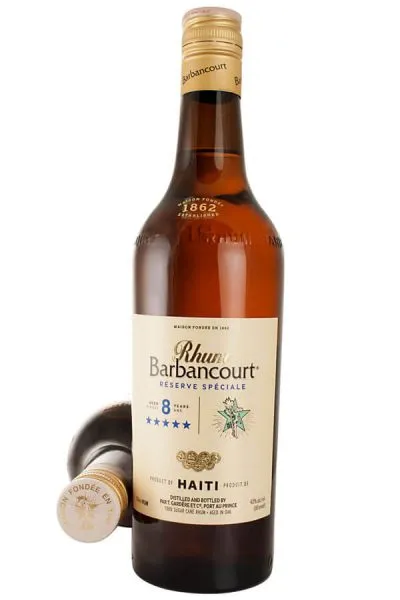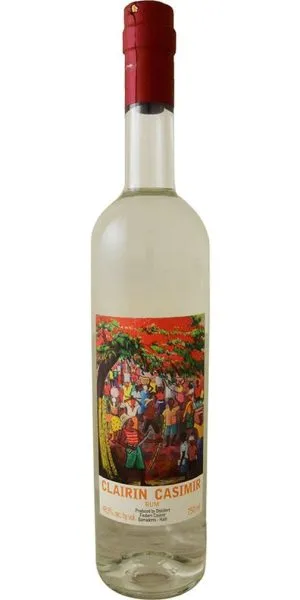The history of Haitian Rum is a long one that stretches back centuries. The story began when French settlers arrived in Haiti and established sugarcane plantations. The colonists introduced the production process, which brought enslaved Africans to work on this island’s sugarcane crops.
More enslaved Africans were imported to increase labor demands for harvesting and distillation processes as time went on. This importation led to an increased need for alcohol like cane liquor (which would later be known as Rhum), consumed during hard labor or relaxation periods.

Haitian Rum became popular among Haitians themselves, but it wasn’t until 1840 that it began to take off internationally.
What is Haitian Rum?
Haitian Rum (Rhum) originated from the sugar cane liquor brought to Haiti by French colonists in 1690. The first distillery on record, La Mauny, has been producing and selling them for nearly 350 years. By the 1750s, there were around 90 different producers of cane liquor in Haiti.
The French colonists brought the sugarcane from Asia and planted it in the new world. The climate and soil of Haiti were perfect for growing sugarcane. By the mid-1800s, Haiti was producing more than half of the world’s sugar and became one of Europe’s largest suppliers.
Some rum was exported to France, while most stayed for local consumption by colonists and enslaved people until the Haitian Revolution in the 1790s.
Taste Profile of Haitian Rums
In addition to this land’s history, Haitian rums also have a distinct taste profile that is quite different from other rum types worldwide. The sole reason for this is that many of their distinctive flavors come from aging in oak barrels, and on average, they age between five and ten years.
Some of the flavors you may taste in Haitian rums include banana, vanilla, caramel, and cocoa. In addition, they are often smoother than other types of Rum, making them a favorite among many rum drinkers. If you are looking for a unique taste, Haitian rums are worth checking out!
Types of Haiti Rum Brands Available to Buy
Haitian Rum Barbancourt
The Barbancourt Company is one of the oldest and most well-known Haitian companies. It was founded in 1862 by Barbancourt and today produces Rum, vodka, and other spirits. The company has a solid international presence, operating in over fifty countries.
The Barbancourt Company is a leading producer of Rum in Haiti and has been credited with helping to revive the country’s rum industry.
Rum has been distilled in the Caribbean for centuries. The first Rum was distilled from sugarcane juice in the early 16th century. It was called “Rhum de canne” or “rum of the cane.” In the early 17th century, the French distilled Rum from sugarcane juice.

They used different methods to distill it, including copper stills and alembics. Rum production continued to increase in the Caribbean during the 18th and 19th centuries. However, rum production declined in the early 20th century because of Prohibition in the United States. Rum production resumed in the late 20th century and has continued to grow since then.
The most common type of Rum is made from molasses. Molasses is a by-product of sugarcane processing. Rum is made from fermented molasses and is typically aged in oak barrels.
Rum Barbancourt is a Haitian rum that is distilled twice. The first distillation occurs in pot stills, while the second takes place in column stills. This process results in a rum with a more intense flavor and a higher alcohol content.
The rums are distilled in copper pot stills and aged in oak barrels for 15 years. The result is an elegant, refined spirit with a taste that reflects the terroir of Haiti.
Bakara
Bakara is a rum made in Haiti, and it is a dark rum made from sugarcane juice and molasses. It has a unique flavor that is different from other rums. Some people claim that Bakara has a strong taste that is fruity and spicy.
This Rum is perfect for those who want to experience a unique flavor. Bakara is the second most popular Rum in Haiti, and it is trendy among Haiti’s younger generation, not least due to its lower price point than Barbancourt.
Vieux Labbé
Vieux Labbé, produced and bottled in Haiti, has established a solid reputation. The Barbancourt rums are connected to the part of their history with the Vieux Labbé name, but they are now known as individual labels.
Boukman
Boukman has carved a niche for itself in the United States as the first artisanal Agricole rum of its kind, with an exotic blend of West Indies spices.
Boukman Botanical Rhum is made from two of Haiti’s top rhum terroirs, the lush cane fields of Croix des Bouquets in the south and northern cane fields around Cap Haïtien, the site of Dutty Boukman’s uprising.
Where does Rhum Agricole come from, and what exactly is it? Rather than being produced from concentrated molasses, as with most rums globally, Rhum Agricole is distilled from fresh sugar cane juice. Boukman begins its life as a sugar beet grown in the fields outside Croix-des-Bouquets and aux capes.
How should you drink Boukman rum?
It is best to drink Boukman rum straight. Boukan is also great for adding spice to mixed drinks if you don’t mind losing some complexity!
CLAIRIN CASIMIR
Since 1979, Faubert Casimir has been the head distiller at one of Haiti’s oldest rum distillery, Faberge. His father, Casimir Faubert, started the distillery in 1892, and it has been in the family ever since.
Faubert Casimir is a fourth-generation distiller, and he has continued his father’s work since then. The distillery produces a variety of rums, including a dark rum known as Petit Papa Faubert.

In the early 1900s, Faubert Grows 50 Hectares of Sugar Cane That Is Not A Hybrid of Hawaii Blanche. This achievement was a monumental achievement for the Haitian people, as it showed that they could produce a crop that was not based on the hybridized sugar cane that had been introduced to the island by the Europeans. This crop allowed the Haitians to become self-sufficient and build their economy.
Kleren
In Haiti, kleren is a distilled Haitian alcoholic beverage. They tend to have a higher alcohol content than the average alcohol drink.
Kleren is an un-bottled rum and not a specific brand. It is made using traditional techniques at artisan distilleries, most of them tiny shacks sprinkled throughout the countryside.
Kleren is a type of Agricole Rum. Unlike molasses, it is made from sugar cane juice, giving it a robust, smooth, and unmistakable taste.
The first time I tasted Kleren was on the French Island of Martinique. The bartender handed me a small glass of the golden liquid, saying it was called “Kleren.”
I took a sip, expecting the harsh taste of alcohol that usually accompanies rum cocktails. Instead, I experienced something entirely different. It had a robust flavor that was smooth and unmistakable with honey and sugar cane hints.
Kleren should be enjoyed plain, but it can also come in many other flavors. Kleren is typically filtered and then matured in wooden barrels. For example, if you add a root or leaf to the kleren, the finished product is called a tranpe.
Kleren is an essential element of Haitian culture. You can find it for sale both by the roadside in jugs, but you should buy it from a liquor store if you want to taste it yourself. They tend to have many different varieties there, selling them in smaller bottles.
How to Serve and Drink Haitian Rum?
Haitian Rum is an incredibly versatile spirit, with a range of flavors similar to bourbon or cognac. Many different styles and types are available, each unique taste profile. Knowing how to serve it properly will make anyone fall in love with this incredible style of Rum! How you drink your Haitian Rum depends on the type of Rum you choose.
Light rums are perfect for mixing cocktails, while the darker varieties make fabulous sipping rums. Here are a few tips on how to serve Haitian Rum:
- Mix them with fruit juices or cola for a refreshing drink for light rums.
- Darker rums can be enjoyed neat or on the rocks.
- Alternatively, mix it with water or seltzer for a tasty mocktail! How do you drink your Haitian Rum? Let us know in the comments below!



